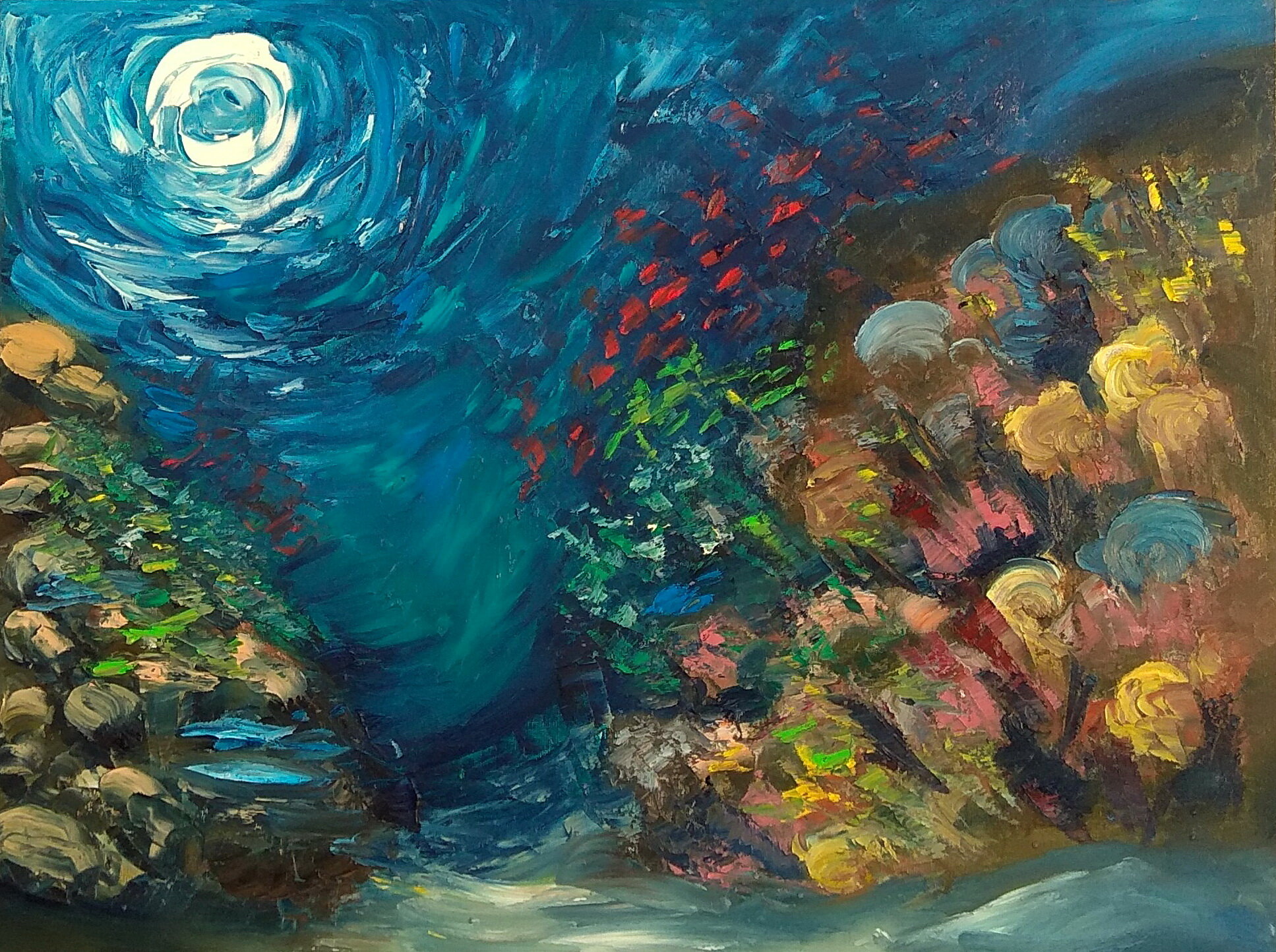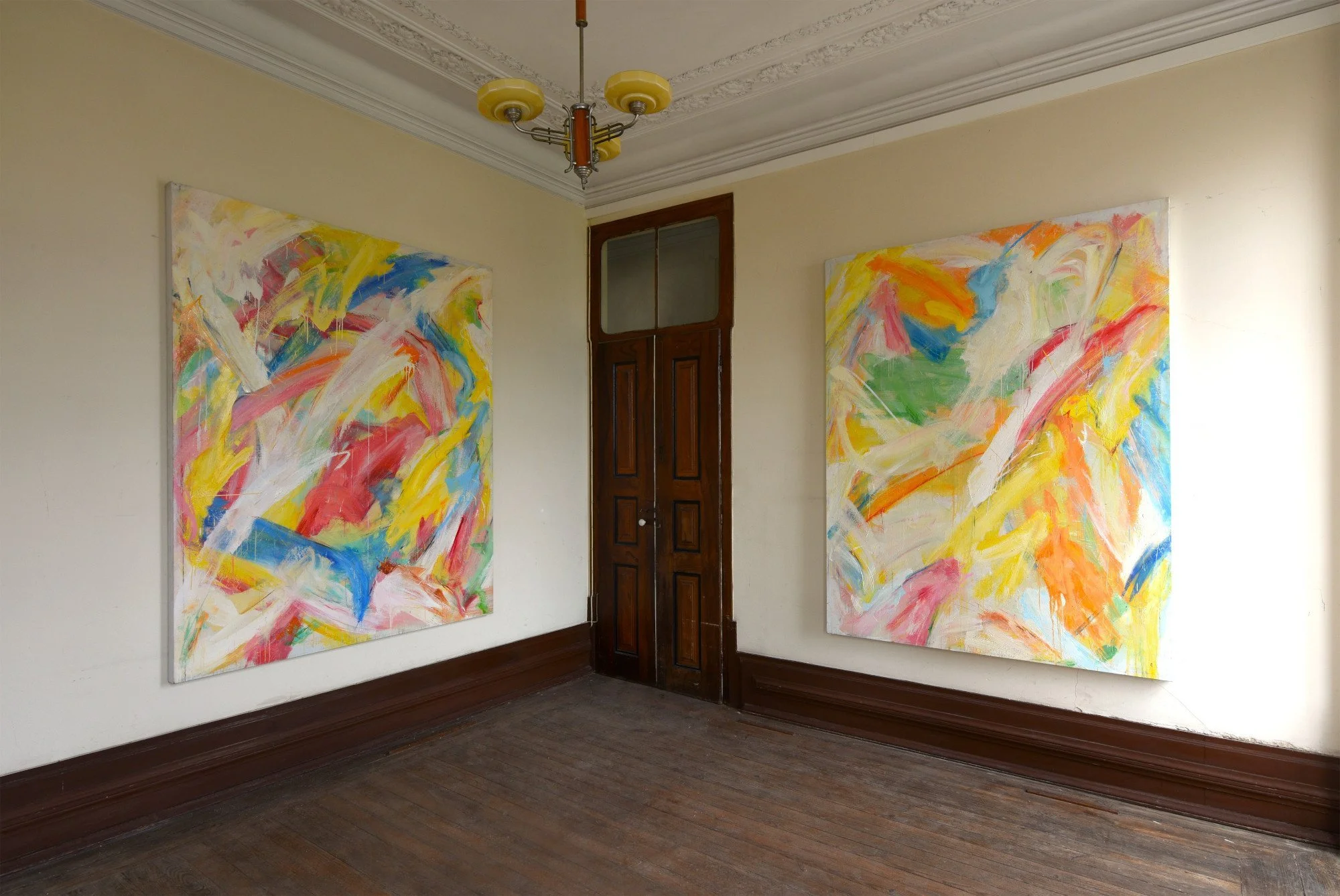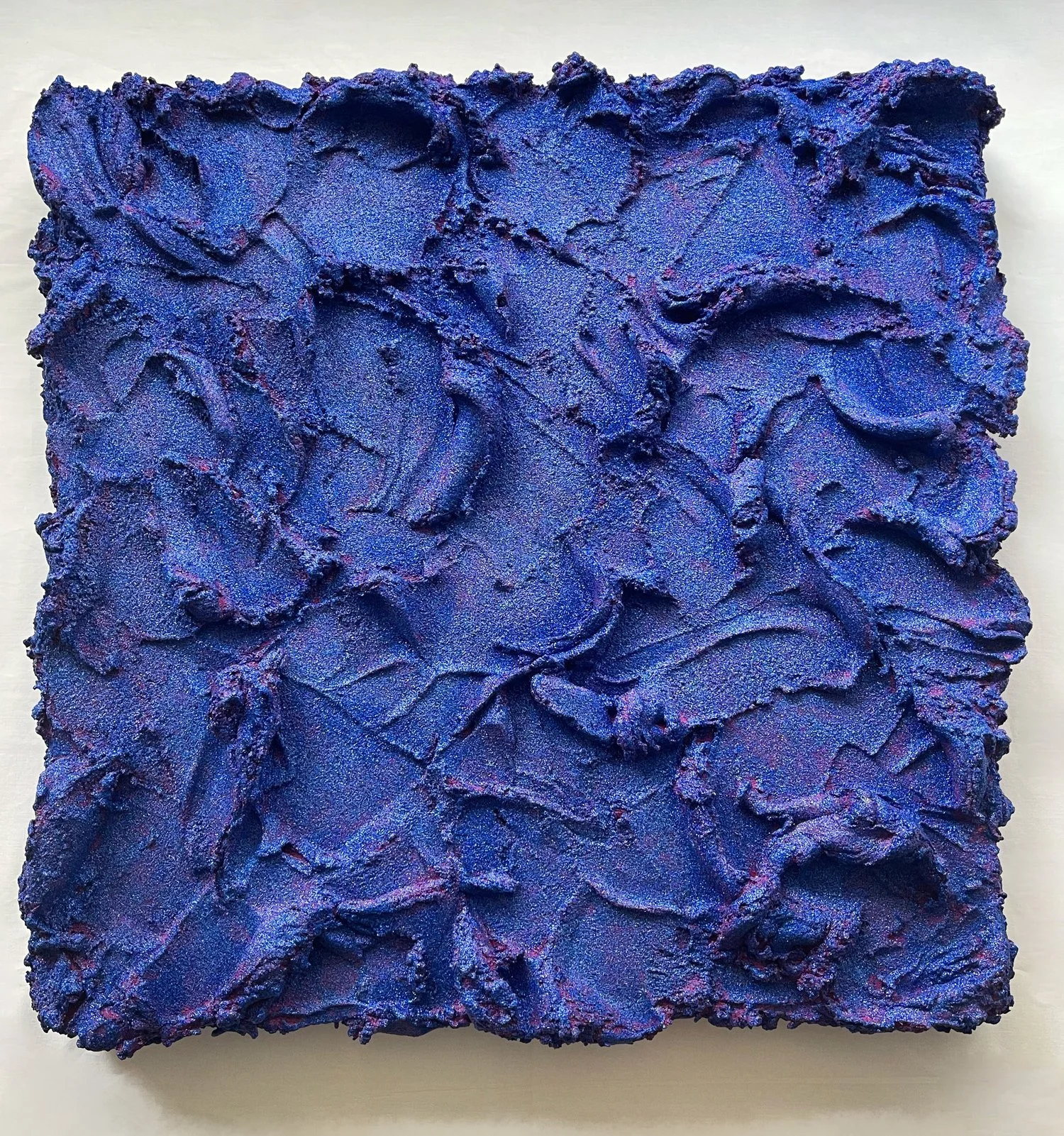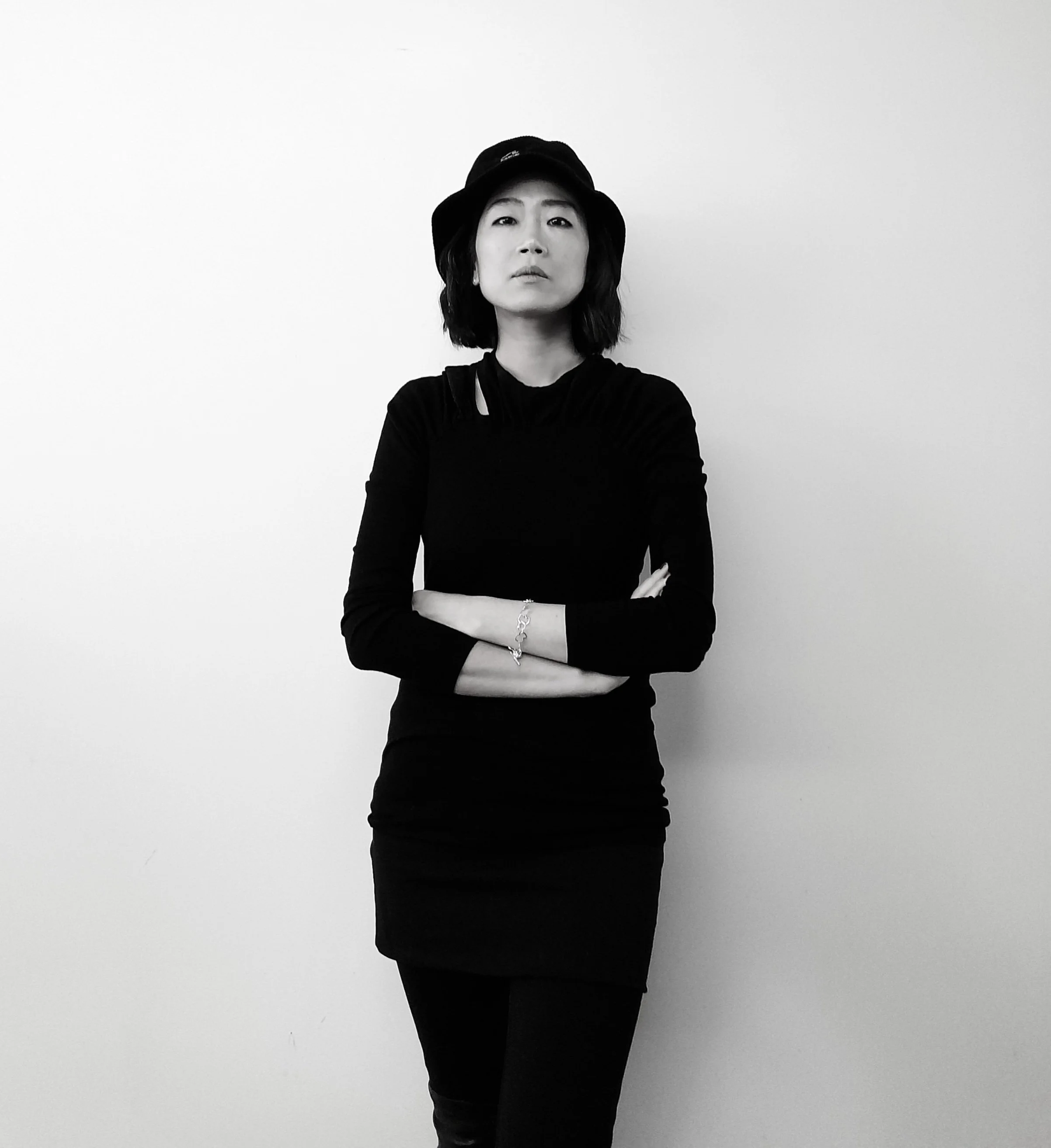10 Questions with Olga Nikitina
Since childhood, Olga Nikitina got acquainted with art thanks to her mom, a musician and teacher of piano and violin. She graduated in interior design and went on designing aquariums. Later on, she tried scuba diving in Sri Lanka almost by accident. She was charmed by the underwater world and decided to become a scuba diving instructor. This gave her a new wave of inspiration which sailed with active travel and scuba diving. She was most impressed by Africa – contrasting, sometimes very wild, sometimes very developed, with the beautiful nature and rich wildlife. What she saw and what she experienced there made her take a brush in hand and paint her first work in a long time. She now draws her inspiration from the Red Sea in Egypt, where she moved. Every single time coming out of the water, she grows a ripe new picture in her head that she later captures on the canvas. She loves taking underwater photos, researching all the details, considering and admiring the colors and shapes. And this is how gradually the series of paintings “The Red Sea” was created.
The artist underwater with one of her works. Olga Nikitina©
ARTIST STATEMENT
"Painting always was a big part of my life. But new work opportunities and environments gave me new inspiration – and a new direction for my painting.
In 2008 I became a scuba diver. In 2015 I became a scuba dive instructor and moved from Russia to live in Egypt.
The Red Sea is a unique ocean - with its corals and amazing marine life. The empty, monotonous desert landscape contrasts sharply with the bright colors and rich underwater life. But it's not a secret that the marine environment is endangered nowadays, and we, as responsible citizens, need to care for and protect our ocean.
Scuba Divers witness the changes happening in the ocean – and can be among the first to raise the awareness of others to these growing problems. Nowadays, most scuba divers have underwater cameras to record the treasures and tragedies happening underwater – in this case, evidence of the destruction of marine life. Art, too, is a very effective tool and medium to communicate these messages.
The main focus of my painting is underwater marine life.
Underwater I have learned not only about the many life-forms, but the shapes and colors of everything in that realm continue to blow my mind. After diving, when at home, I work hard to remember what I have just seen underwater – and what I remember is not always exactly what I wish to show. This realization led me to underwater painting – taking a slow exposure photograph right next to my subject.
I have been working as a dive instructor in Egypt for the last five years. I fell in love with the Red Sea, with its beautiful and colorful underwater life, spectacular drop-off views, and magnificent coral reefs. I love to take underwater pictures, but I feel as well that it is not enough to communicate my admiration for the Red Sea. I realize I can do it only through my soul – through my painting. And the best way to feel inspired is to be there, be a part of marine life, and be immersed in the underwater environment.
Painting underwater is completely different from the traditional painting above the surface. When I am underwater, I feel the ocean energy and unity with nature, the silence around. Only I can hear my breathing and sometimes fish rambling. It is easy to enter a trance state when painting underwater. Rays from the sun penetrating through the water are magical - you can see and feel that this is the point where two different worlds intersect and mix – and this is a favorite subject to reflect in my paintings.
I believe that with my paintings, more people will fall in love with the world of the sea and become involved in the protection of our oceans for future generations to enjoy and wonder at. That is what I wish to come of these works and this experience in my life." - Olga Nikitina
INTERVIEW
You are a painter but also a scuba dive instructor. How did you start painting?
I have been painting since my childhood – at school, I went to fine art lessons and traditional Russian folklore painting such Askhokhloma, Geustovo, Gzhel, Kudrina- which you can see on «Matreshka» usually.
I have a degree as an interior designer from Ulyanovsk State University, where I had six years of academic drawing and painting lessons. But since I finished University, I haven’t been painting for five years, and just while traveling in Africa, I got back my inspiration. Same time I completely fell in love with the underwater world and scuba diving. Before I saw tropical fish in the ocean, I had met them while doing aquarium design. I was so impressed by seeing them in their natural environment full of colors, different species, and endless coral gardens just blew my mind. In 2008 I did my open water license in Marsa Alam, Egypt, and my diving traveling began. I have visited many countries, dive in different seas and oceans. And in 2015, I became a diving instructor and went for work in Egypt. I spent every day in the sea and 2 to 3 hours underwater. I draw so much energy and inspiration from the sea and marine life that I could not be silent – I had to express myself and my emotions in my art.
Olga Nikitina©
Your art and your art practice are unique. What is your main goal as an artist?
My art is my language. I want to make people more human, more spiritual to find their souls, love, and kindness through the reunion with nature. Many people are suffering from the modern model of our society. Lots of them doing a job they don't like, but it feeds them. They give to it up to 95 % of their time. Then, what's the rest for? Family, friends, or themselves? There is no time to live, no time to enjoy mother nature, no time, and no wish to love and smile. People become tired and angry; they lose their energy, and a part of the soul, creative, spiritual, fades away in a person. Society becomes aggressive, and you need to fight to survive in it.
Working in the holiday and tourism industry, you can see how people behave at the beginning of their holiday and the end. First, they can't relax at all; they are always watching the time and holding the phone close to reply immediately if somebody makes a call. They are always in a hurry, like they are afraid to miss the last bus. Just close to the first week, you can see how the person changed, more relaxed, smiling, and enjoying everything. Any open-air activities like water activities in the sea, climbing, trekking in the forest, cycling, walking, paragliding, where you communicate with nature, fill up your body with positive and powerful energy—art a big part of this puzzle.
I believe every individual has his creativity, just it is at the bottom, and we put on top of it other «important things,» but we need to use it to develop, to live with it. I noticed that in remote areas or small towns where people live among nature, I met many artistic and creative people.
So I am very happy to have the opportunity to attract people by my art to nature, in diver to find an art person and show a new reality – underwater world to art person.
With my paintings, more people will fall in love with the world of the sea and nature. Become involved in the protection of our oceans for future generations to enjoy and wonder at. Will smile more, love, and will spiritually improve their quality of life. With it, the world become more beautiful.
How did you come up with the idea of underwater painting?
It isn't my idea. The pioneers of underwater painting were artists Eugen von Ransonnet-Villez and Zarh Pritchard, who creates in the 19-20th century.
Andre Laban, who worked in Jacques-Yves Cousteau Team, was very inspired by the Red sea. The first underwater boxes for cameras are his invention as well. He was a chemist, so he created a special cover for canvas, and he found out what colors are possible to use underwater for painting and that it is not toxic for the environment. He has been painting underwater for 20 years, and his works are now all over the world. I can gratefully say that I am a follower of Andre Laban, same as some other Russian artists like Denis Lotarev and Alexandr Belozor.
I started doing underwater painting when I began to work as a driving instructor. My two passions combined together.
And how can you actually paint underwater?
There was no manual on how to paint underwater. All I could do it is learn by experience. I got some advice from Denis Lotarev, and all the rest was my try – falls and success. Finally, I found optimal painting techniques with a palette knife.
And important things are the gesso and colors should be water-resistant and environment friendly.
What was the most challenging part of your work?
There is a list of issues while underwater painting. First of all, I need to be well equipped and think about all details like how I will move, how I will control my buoyancy. I need to be able to equalize. Canvas, palette knife, colors must be negatively buoyant. Otherwise, it is easy to miss it. Then I am limited with an air consumption and decompression limits. And on top of that, the colors change with the depths. At a depth of 10 meters, I hardly can recognize red colors.
Most challenging for me to swim back with fresh painted artwork in my hands especially in a current and still be able to control my buoyancy.
Olga Nikitina©
In your statement, you talk about a quasi-trance state you enter when painting underwater. What is it like to work deep immersed in the Red Sea for long periods, and how does it affect your creative process?
While scuba diving, we breathe compressed air, and our body saturates with nitrogen.
Under the influence of nitrogen narcosis, the diver has mental retardation; reactions slow down, feels a state of euphoria. But this can happen at a depth of 30 meters and not often. However, you can notice that your brain works slowly. For example, during an advanced open water course, we do math exercises at 30 meters depth. Often, diver confuses, or it takes longer to make a task that it would take on the surface. While I do underwater painting, even at a depth of 5 meters, I feel how my brain works slowly but in a good way, very relaxed, with fewer thoughts, less distraction around. Rhythmical breathing sound put me more in a state of meditation, and I become intuitively creative. I try to finish the artwork in one session because I never can dive twice in the same atmosphere. It sometimes takes up to 120 minutes. Physically it is hard; I feel I give a lot of energy to my creative process. After that, I am exhausted, and I can do only one underwater painting session maximum of 120 minutes per day.
How much preparation both physically and mentally goes into being ready to paint underwater? What is the most enjoyable and riskiest part of your process?
I need just a good mood and good weather conditions, and I am ready to create underwater. Of course, if physically I am tired or sick, I will not go even just for diving. The most enjoyable and surprising part is to see the artwork on the surface. The colors always look different, and you never know exactly what you created underwater. The riskiest part is changing weather conditions and coming close to the air or decompression limits what can happen if you are so deep in the art process and can’t stop.
Olga Nikitina©
Your work is not just aesthetically beautiful, but it also conveys important messages, such as the preservation of the oceans and the impact that human activities have on marine life. What would you like the viewers to take away from your work?
I really wish to make people fall in love with the ocean and marine life. When you love, you care about it.
Scuba Divers witness the changes happening in the ocean – and can be among the first to raise the awareness of others to these growing problems. Nowadays, most scuba divers have underwater cameras to record the treasures and tragedies happening underwater – in this case, evidence of the destruction of marine life. Art, too, is a very effective tool and medium to communicate these messages.
I personally witnessed how huge fields of coral gardens died on Similan Islands in Thailand because of hot water temperature. And many tropical areas suffered from it. The Red Sea is the last one where we have a wide variety of hard and soft corals in good condition. The average water temperature is still fine for the corals, between 22-25 Celsius degrees.
I hope not, but maybe in 100 years, people will see only at the painting and photo how beautiful the underwater world is.
Looking at your paintings, it is easy to recognize where you find inspiration. What is the most incredible thing you have seen in your diving sessions?
I think big animals are very impressive, in South Africa I saw a whale underwater. Big sharks are very beautiful too; the whale shark is my favorite, it is huge and very nice color, dark blue with white spots. And, of course, red pseudo anthias fish – the business card of the Red Sea.
About your vision underwater, how do you perceive details while constantly moving with the waves? Do the wave movements participate in your inspiration?
Underwater I can see waves above me on the surface, the direction where they run, but I don't feel them. What I can feel is current. I try to find a place where I can hide from the current, but during the dive, things may change, and once I felt like a new current appeared like a hurricane. I struggled to stay in front of my artwork, currently trying to blow me away. But waves are part of the art process as their movement influences the Sun lights very much. One of my favorite parts of the underwater painting to express Sun lights' movement at the surface because of waves with all their shades and glares.
Olga Nikitina©
Apparently, you also inspire fishes, like the one in the video. Could you tell us about that experience? How do you establish connections with the ocean?
That was an amazing experience. This lionfish is my friend, and I call her my curator. I dive so at the same place on the house reef that I recognize all fish and animals there. During the underwater painting session, I spend a long time at the same place that animals get used to me, don’t afraid anymore. Come very close, try to play. As an example, triggerfish like a dog like to catch my paint tubes. And I have my main model, big old turtle Henrietta, very often she likes to pose to me. Underwater I feel integration into marine life, like as I would be a mermaid.
How do you see your art evolving over the next few years?
I began underwater painting by trying to capture underwater scenes, coral landscapes, and fish, environment mood. Now I focus more on my subconscious and feelings, and I do a more intuitive painting based on what I feel, more abstract. I am going to do experiments with the depth and sizes. As well, I would like to involve more people in underwater art. I think about the project - with a group of divers all together create a big artwork underwater where all can express their emotions on one canvas. It will be the same variable as an underwater world.
Another interesting idea came to my mind right now, while I am living in South Africa, Wilderness. It is a paradise for paragliding, and I’ve just done my tandem flight. I was very impressed by the view from the sky. It is nothing common with the view from the airplane, and feelings are completely different. It is the same as diving – where I feel like I am a fish. I can stay in an environment that is not for humans. In the sky, while paragliding, I feel like I am a bird. So I would like to combine all three environments in my art and call it «Three dimensions» or «Three reality» Sea-Air-Land Art and integration between. This is my direction for the next few years.



























